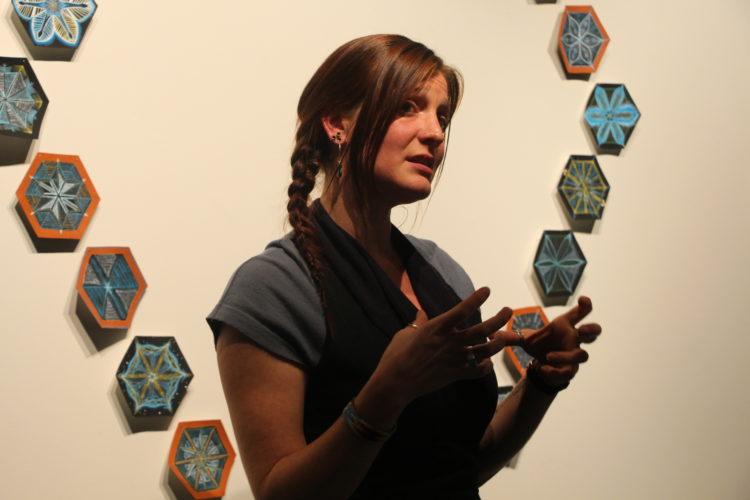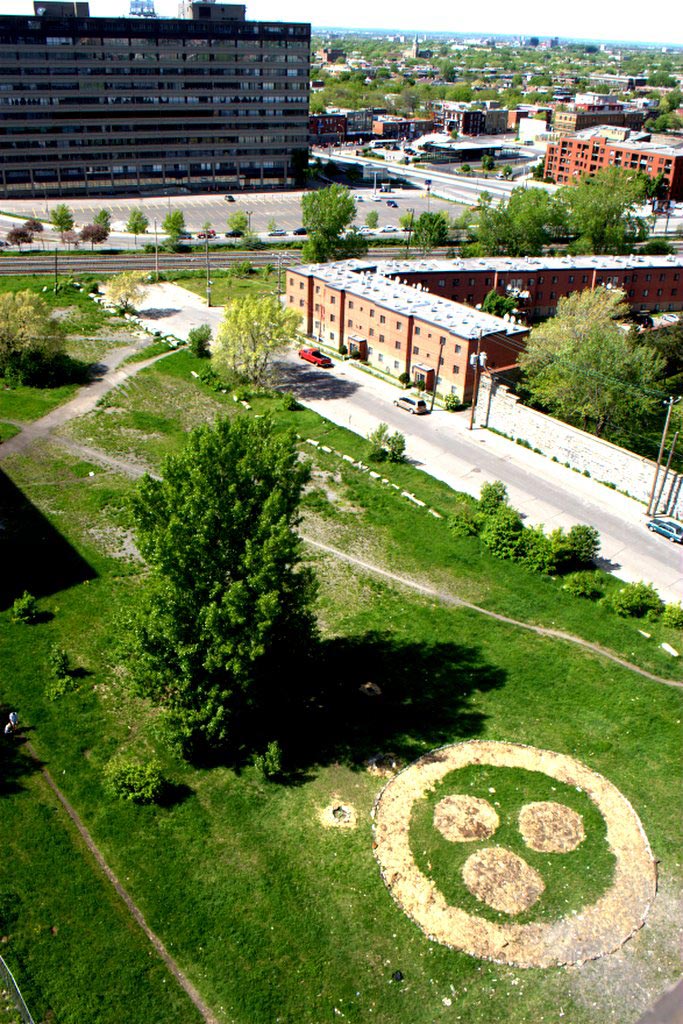
Emily Rose Michaud is an interdisciplinary artist and educator working at the crossroads of community organization, ecology and civic participation. Her work highlights the social importance of marginal landscapes, engages with land as a living entity, and maintains a practice in ephemeral media. Her body of work encompasses land-based art, installation, drawing, writing, performance, and intervention. In recent years, her environmental and participatory approach has resulted in a series of in-situ art projects, speaking engagements, community activist art projects, performances and publications. She has exhibited nationally, both in and out of the gallery and has attracted international media attention for her Roerich Garden Project in Montreal.
Based in Montreal since 2000, Michaud has collaborated with architects, botanists, gardeners, policy-makers, activists, journalists, community groups, politicians, and Youth. In 2009, she co-founded Les Amis du Champ des Possibles, a citizen-run non-profit that demonstrates and advocates for the cultural, ecological, and social importance of wild urban spaces. Her ongoing encounters in art and landscape emanate from the bio-regions of Outaouais in Western Québec and Montréal.
Michaud’s academic outreach can be found in her contributions as editor and writer: she was creative director and co-editor of The Roerich Garden open book project, (2008-2011) and has contributed essays and content to anthologies including DIY Citizenship: Critical Making and Social Media, MIT Press (2014), and Thinking With Water, McGill-Queen’s University Press (2013).
Michaud holds a BFA from Concordia University (Montréal) and a Bachelor of Education from the University of Ottawa. She lives in Gatineau.
Artist Statement
I have gravitated between Montreal and the Gatineau Hills of Western Quebec since 2000. I find sustenance in the cultural life and social movements of urban centres, yet have a personal need to create near and with the changing elements and conditions of the living landscape: under open sky, by water, in wide open spaces.
Land Art, in-situ installation, performance, drawing, painting: My art weaves into its’ fabric something bigger than object — experience. I invite the public to participate in something natural, impermanent, to re-invigorate our sense of belonging. I work to collaborate with environmental and social forces greater than me, to eclipse cynicism, to take responsibility for the places we find ourselves in, to deepen our relationships with the landscapes in which we live. As a practicing visual artist, I assemble into my projects social life (and energies) not yet recognized as art. I extend my creations beyond sole-authorship, into co-authorship.

More concretely, some of my projects include: street performances in which I offer water samples of Quebec rivers and lakes on city streets to the public while dressed as mermaid; initiating the Roerich Garden (2007-2011) — a collaborative landscape-scale artwork to provoke dialogue about the future of an abandoned railyard turned wild meadow and one of the last undeveloped spaces in Montreal’s Mile End. The project’s efforts sparked change: Citizens gathered, defined their priorities and dreams, and the land’s zoning was changed from industrial/commercial to park. The city’s $9-million “development” plan fell under closer community scrutiny, and is to this day, a protected space. I’ve also experimented with a multi-year series of living tapestries, growing germinated seeds through burlap and transforming them into various sculptural installations, in both indoor and outdoor spaces, rural and urban. My latest project involved projecting a super 8mm film of the Gatineau River upon one of these installations grown of rye and wheat.
Whether living tapestry, multi-year Land Art project or electronic book made to be re-mixed, my projects embody the living processes and traces of material as social practice. I experiment with ways of working that feed the commons, transform spectators into participants, and extend artistic production beyond rarefied spaces — into social, political and environmental action. I am concerned with the living systems of our world, both our cities and villages — natural, cultural, civic — especially as they relate to municipal power, politics, and decisions that impact urban/rural development, ecology, and land use.
— December 2014.